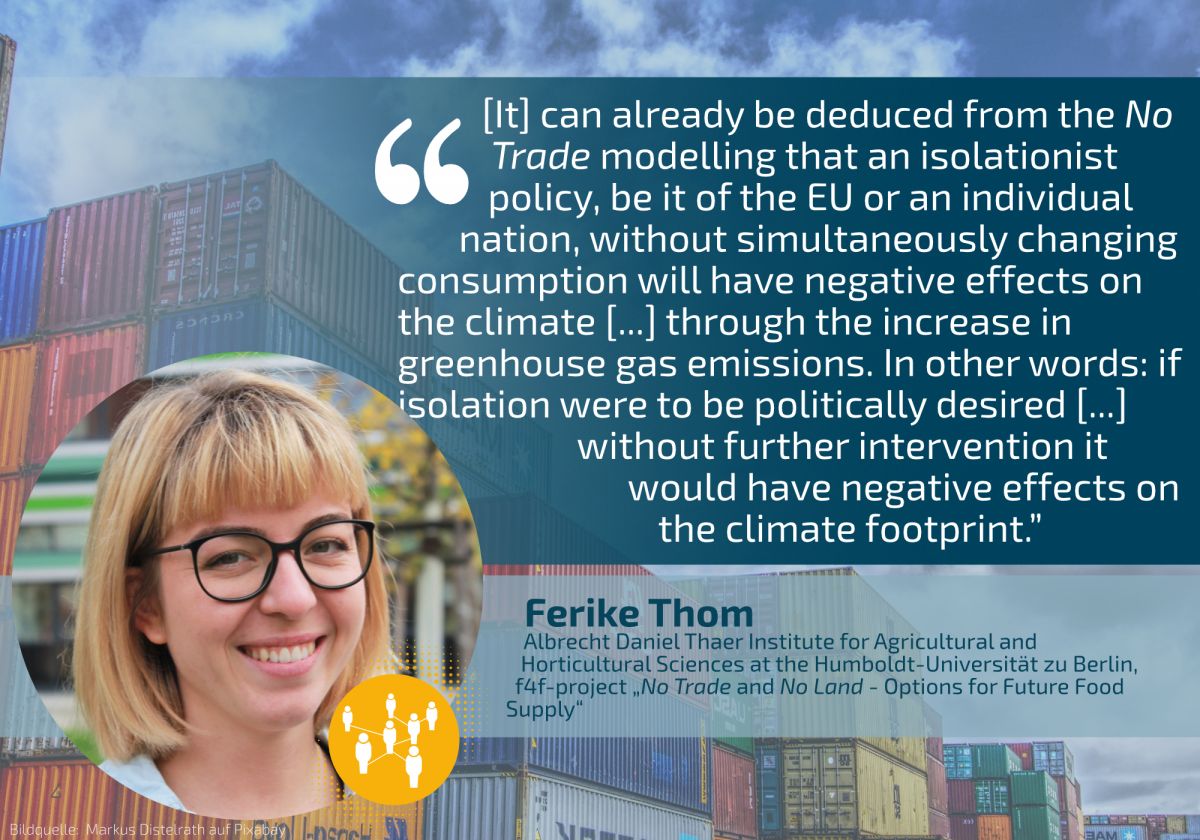Interview | Ferike Thom
The agricultural economist talks about surprising first results and why her work is comparable to an escape room
13.10.2020
What is meant by "equlibrium models"?
The computer models I work with are essentially systems of equations as we know them from mathematics lessons at school, that is equations with different variables, such as x = 2y or x = y+2, which describe different economic relationships. These equations specify, among others, that only goods that have been produced or imported can be consumed. Available agricultural land for the production of certain products is also included in the equations.
When working with the model, we look for the quantities produced and consumed for which all equations are fulfilled, i.e. when the system is in equilibrium. General equilibrium models consider the whole economy, all sectors, including the labour market or currency exchange rates. In partial equilibrium systems, and this is the one I am currently working with, only one sector is considered. In my case this is the agricultural sector. In contrast to general models, there is not just a summarised agricultural or cereal sector, but a detailed breakdown into many equations: Wheat, rye, oats, etc.
A distinction is then made between static and recursive-dynamic models. Static models look at one year at a time and assume that a new equilibrium is established after adjustments to changes, which in turn can be described. Dynamic models take into account the developmental paths along which equilibria are established. Since these models are much more complex, but provide only moderate added value for my specific problem, we decided to work with a partial static equilibrium model.


